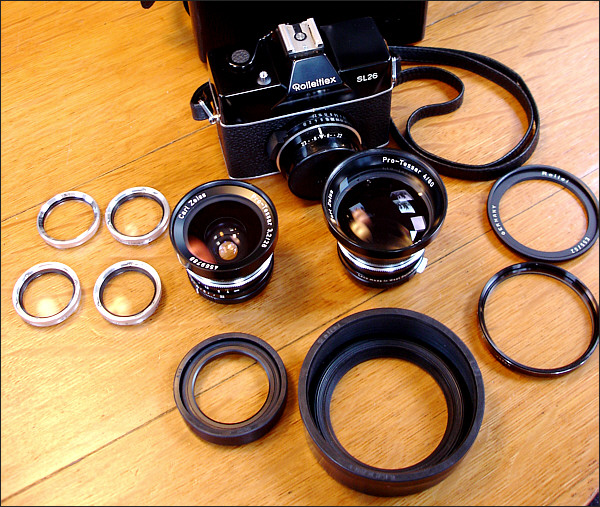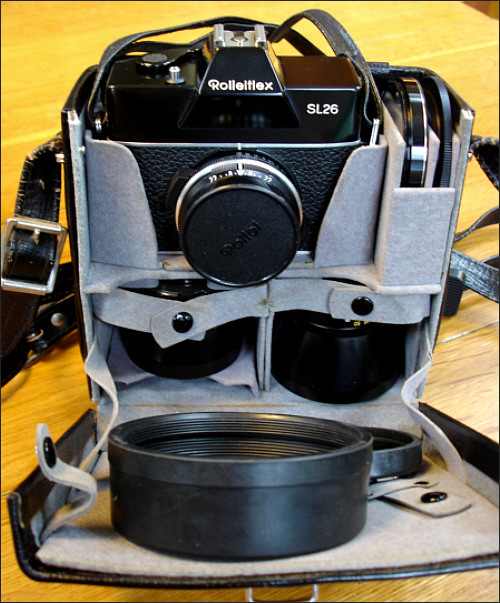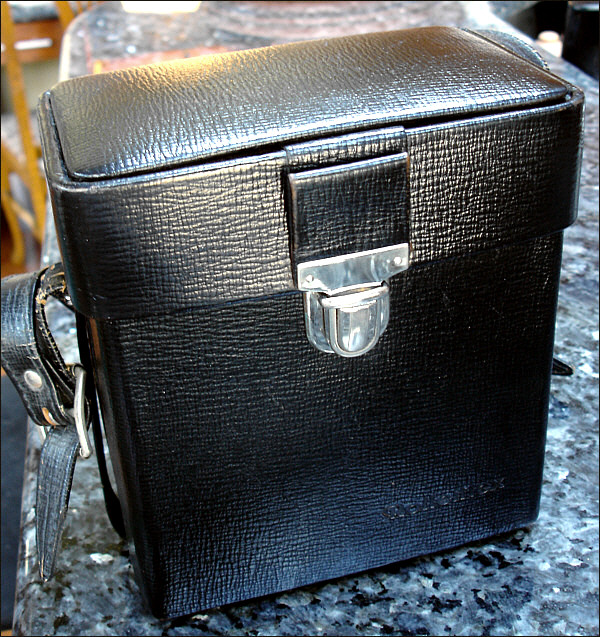Rolleiflex SL26

|
|
|
| Style, film format | Interchangeable-lens, single-lens reflex, 126 cartridge |
|
|
|
| Lens, shutter | Coated Carl Zeiss f/2.8 40mm Tessar, Synchro-Compur |
|
|
|
| Photo quality | Very good |
|
|
|
| Ergonomics | Boxy |
|
|
|
Kodak's focus on the amateur market was convenience beginning with its first Brownie camera. In the 1960s, Kodak introduced the 126 drop-in plastic film cartridge, and not long after other manufacturers jumped into the game. Most were simple point-and-click cameras, but several camera makers went above and beyond what others offered. The German-made Rolleiflex SL26 is one of those cameras.
Featuring a lineup of three interchangeable lenses (actually, bayonet-mount front lens groups all based on the Tessar design), a sturdy metal body and easy match-needle metering, this is one of the better SLR designs for the 126 film format.
Compared with other SLRs, the Rolleiflex SL 26 is both small and boxy. The tip of the right-side film advance sits neatly above the viewfinder. The shutter button is where you expect it to be. There is no need to rewind the film, which made for a very clean top deck.
The film advance requires a very long throw and a moderate amount of force. But it has to advance the film, as well as tension the Synchro-Compur shutter. The camera, unlike other German cameras, has a rapid-return mirror.
Despite its small size, I found the camera very easy to use, and images snapped in and out of focus quite easily in the viewfinder, which is plenty bright. There is a central split image surrounded by a generously sized ground glass collar on a fine-grid fresnel screen. A true hot shoe makes it easy to use almost any flash unit.
A 625 mercury cell (now using a zinc-air battery) provides power for the cadmium-disulfide meter. The shutter is purely mechanical, so if the battery dies, you can continue shooting. Like most Synchro-Compurs, it offers an expansive range of speeds for a camera of this type running from 1/2 second to 1/500 plus B.
The camera itself isn't particularly quiet. In fact, it's loud, considering that it uses a leaf shutter. In a prior disassembly, I know why. There is an incredible amount of machinery packed into a small camera that that allows for open-aperture match-needle metering and a rapid-return mirror -- all coupled to a leaf shutter. In fact, The SL26 does what most 35mm SLRs do but in a body that is half as wide.
In addition to the stock Tessar, there were two Pro-Tessar lenses: a 28mm wide angle and 80mm portrait lens. I have both and have used the 28mm. I was pleased with its performance.
A complete kit included the camera, UV filter, three Bay 1 Rolleinars (1,2 and 3), the 28mm and 80mm Pro-Tessars and two collapsible rubber lens shades for the standard Tessar and accessory lens elements with a 55mm-to-62mm step-up ring that allowed you to use the 62mm-thread hood on both accessory lenses. All of this could be kept in a special deluxe Rolleiflex-branded case. There also is the more common ever-ready field case; the top can be removed completely.
It's an excellent little camera, hampered only by the loose manufacturing tolerances of the 126 Instamatic cartridge, as well as the limited availability of 126 film and processing.
Here are photos of the complete Rolleiflex SL26 kit:

The Rolleiflex SL26 camera with the Pro Tessars, lens shades, close-up lenses and step-up rings.

The fully packed kit doesn't leave much room to spare.

The deluxe carrying case for the Rolleiflex SL26 and accessories.
